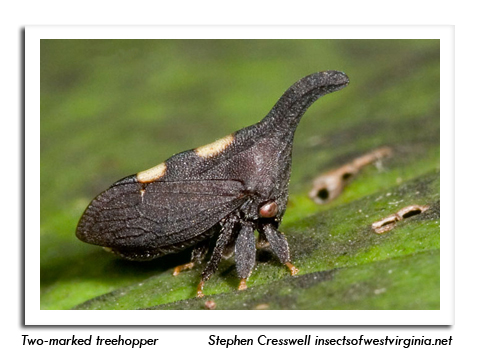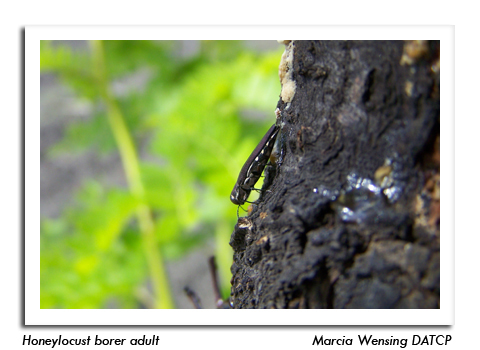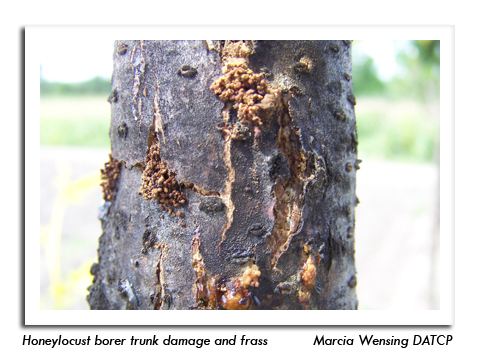
 |
|
|
Nursery & Forest
Volume 57 Number 19 Date 08/23/2012 GYPSY MOTH Pheromone trap take-down is proceeding, with 32% of the 19,000 set traps removed. The state moth count is currently at 115,013 as of August 22. Last year's count was 233,990 moths in 25,001 traps. --Nkauj Vang, DATCP Gypsy Moth Program TWO-MARKED TREEHOPPER - Adults and nymphs were noted on hoptree and wafer ash trees in Dodge County earlier this week. This distinctive insect with two yellow spots and a thorn-like dorsal projection injures trees by extracting sap from leaves and young shoots, while the female adults can damage twigs by depositing eggs into small slits made by their ovipositors. After the eggs hatch, the slits remain evident as scars for several years. Although these insects may be abundant in some years, their feeding habits usually do not cause serious damage. DOTHISTROMA NEEDLE BLIGHT - This damaging foliar disease was found on Austrian pines at a nursery in Walworth County. The causal fungus infects needles and may kill pines after successive years of severe infection. Symptoms include needles that turn light green to tan and then brown, while the bases remain green. Infection is usually most severe in the lower crown. Copper fungicides can effectively prevent infection. A mid-May application protects existing needles and a second application 4-6 weeks later protects current-year needles. HONEYLOCUST BORER - Nursery inspectors report that several ?Sunburst? honeylocust trees in Washington County are severely infested with this metallic wood-boring insect. The larvae bore into trees and feed on the inner bark, forming serpentine tunnels packed with frass (feces). In most instances the honeylocust borer infests trees which are stressed due to environmental factors, cankers or wounds, thus it is considered a secondary pest. Management should emphasize alleviating stress factors. Nursery stock found to be infested with any trunk borer must be removed from sale and destroyed. --Liz Meils, DATCP Nursery Inspector 



|
|
|